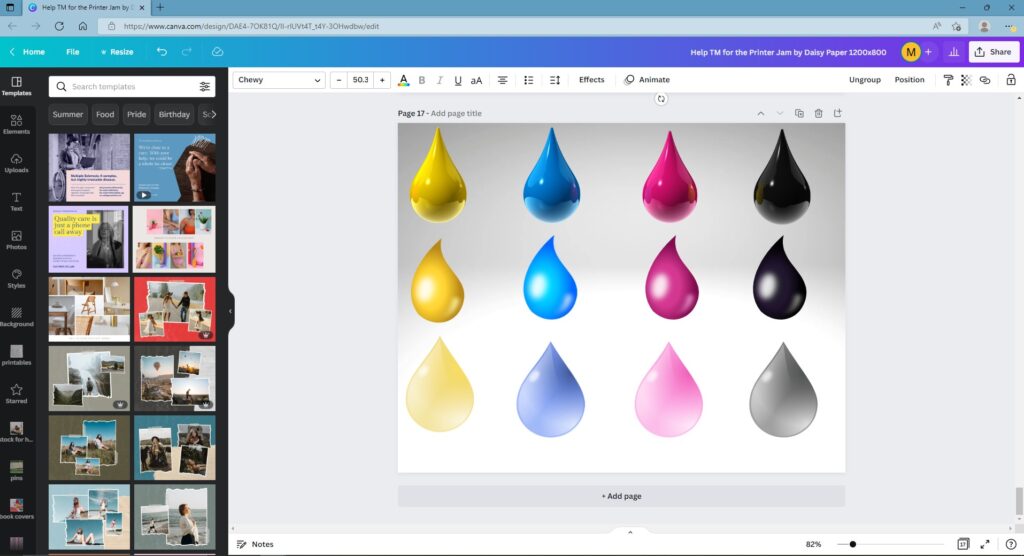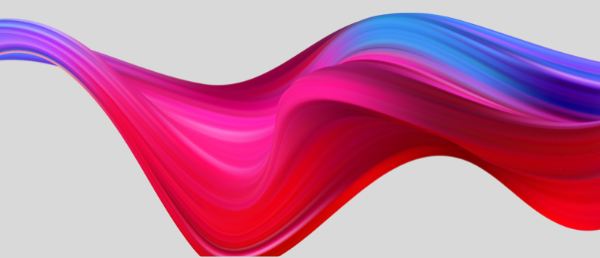If you’re looking for an app you can use for sublimation, there are many to consider. While you can create your own designs to print on your sublimation printer with a word processing app. It isn’t something I would recommend.
The best software for sublimation is an app specifically for design. They make your life so much simpler when designing an image for sublimation.
Any app you can use to create designs suitable for printing is a good app to use for sublimation.
Our list of design apps have the tools and features to create sublimation prints that look great on t shirts or tumblers. They also have color profiles to give the best match for sublimation ink.
These design apps range from simple to complicated. Our list of apps suitable for sublimation basically falls into three categories of programs:
- Desktop Publishing Programs
- Graphic Design Programs
- Photo Editing Software
Desktop publishing apps are probably the easiest to learn since they include templates and clip art. The design process is simplified while customization tools tend to be basic. These apps tend to be most appropriate for sublimation.
Graphic design apps use drawing tools and editing features to create images or annotations. They tend to be the most complex since many don’t include premade design elements or few templates. These apps are also suitable for sublimation.
Photo editing apps range from simple to complex. Some of the simpler apps have built in filters and effects. While more complex ones have powerful tools for image manipulation. These apps are adequate for sublimation projects.
In no particular order, here are 7 apps you can use for sublimation:
Canva

Canva is a great app for sublimation. It’s easy to learn for beginners yet is capable of a broad range of designs. There are a ton of templates, clip art, and photos.
It has free version and a paid monthly subscription version. The main difference between the free and pro is access to better elements, templates, art, and photos.
Canva has more design elements and stock photo’s than any other app I’ve used. The pro version is a worth getting if you want to expand your designs.
It doesn’t have the advanced tools professional graphic designers use. For example, layers in Canva are there merely to move objects forward or backward. There aren’t any advanced features to manipulate how objects interact with other layers.
Photo and vector graphics editing is very basic since there aren’t any brushes or eraser tools. You can flip, rotate, or resize objects. If you can get by with filters and sliders to change values you can create designs for sublimation.
I’ve found the user interface very easy to navigate. Canva is web based so it works with Microsoft Windows, Mac OS, or even a mobile phone! Unfortunately, it doesn’t work on Linux.
Canva allows you to create designs by bringing in premade elements, photos, and custom text. Which makes the creative process simple and lends itself to the sublimation process.
Pros:
- Simple drag and drop process
- Large quantity of premade art and photos
Cons:
- No vector drawing tools or editing brushes
- Only basic manipulation of objects or colors
Adobe Express

Formerly known as Spark, Adobe Express is one of the easiest design apps to use for sublimation. It has a wizard to walk you through choosing a project, adding design elements, and exporting the final product.
It has a free and paid version which unlocks various features and design assets. Resizing a project from Pinterest to Snapchat is one such premium feature. You wouldn’t need that for sublimation but more design assets are always a plus.
Being a desktop publishing app, Adobe Express sacrifices advanced editing tools in favor of ease of use. Still, you can change colors, remove background from photos, and resize objects.
Adobe InDesign is another desktop publishing app from Adobe but is a bit of overkill for sublimation. For example, mail merge or spreadsheet features aren’t necessary for sublimation.
Adobe Express is more geared for things like logos, webpages, or images in general which is better for sublimation. If you want to make quick designs to put on t shirts or mugs, then Adobe Express is a good app to use for sublimation.
Pros:
- Simple drag and drop process
- Plenty of premade art and photos
Cons:
- No vector drawing tools or burshes
- Only basic manipulation of objects
MS Publisher

MS Publisher is another industry standard desktop publishing app which can be used to make designs for sublimating. It doesn’t have a free version but compared to an app such as QuarkXPress MS Publisher isn’t very expensive.
MS Publisher is included with an Office 365 subscription. If you don’t want Office 365, MS Publisher can be purchased as a standalone app.
It uses templates or blank canvas to start. Then you can add clip art, design elements, or photos. Publisher has a decent library of stock art and photos.
Editing tools to modify individual objects are limited. It isn’t quite as easy as Canva or Adobe Express. But it’s still easier than graphic design apps.
While it’s geared more for text publications like newsletters, you can create designs for sublimation. Especially sublimation designs with text or annotations.
It’s also descent for printing stickers. MS Publisher lacks some design layout features but its print layout features make it more inkjet printer friendly.
When it comes to desktop publishing, there are better apps than MS Publisher. Yet, compared to other professional desktop publishing apps MS Publisher is probably a better choice for sublimation.
Like Canva and Adobe Express, MS Publishers simplicity lends itself to graphic focused designs used in sublimation.
Pros:
- Drag and drop process
- A descent amount of photos and clip art
- Basic Text editing and effects
Cons:
- No vector drawing tools or brushes
- Cumbersome working with Adobe file formats
- Only PC based
Adobe Illustrator

Moving on to a true graphic design app, Adobe Illustrator is an excellent app that can create designs for sublimating. If you’re a serious graphic designer this is the app for you.
If you’re excited by a blank canvas then you should try Adobe Illustrator. It has all the features and design tools a creative person like you needs for graphic design.
Adobe Illustrators shape building and envelope distortion tools stand out among other design apps. You can edit color gradients or anchor points of individual objects. Although these tasks aren’t as clunky in other graphic design apps.
While Adobe Illustrator is powerful software, it isn’t free or easy to learn. It’s is available with a with a creative cloud subscription. Or as a single app for a monthly fee.
Learning this app takes time in my experience. Adobe does provide excellent support and there are many tutorials since it is a popular program.
Compared to the other apps mentioned here, Adobe Illustrator has robust hardware requirements. A multi core processor, 8 GB of RAM, and 1 GB of VRAM are minimum.
While desktop publishing apps simplify the creative process, graphic design apps like Adobe Illustrator rely heavily on your creativity and adeptness with the tools and brushes.
Which can be very rewarding with sublimating. There’s something about seeing designs you created from scratch come out looking good on a t shirt.
Pros:
- Many editing and gradient tools
- Excellent vector drawing tools and brushes
- Great support
Cons:
- Hardware requirements
- Imported Bitmap images tend to lose quality
Inkscape

Considering Inkscape can do about everything Adobe Illustrator can do and is free, it’s a no brainer for sublimation.
In some ways Inkscape is better than Adobe Illustrator. For example, editing gradients and anchor points is simpler in Inkscape. Text tools seem better to me too.
In other ways Inkscape is limited. It doesn’t have built in support for multiple pages yet this shouldn’t be an issue for sublimation. Further Adobe Illustrator shines at Importing files of various formats.
Inkscape needs extensions to allow files to be saved as PNG or JPG. But PDF or SVG is fine for sublimation printing. Aside from these limitations Inkscape is the best free software available.
Similar to Adobe Illustrator there is a steep learning curve with Inkscape. Creating designs from scratch requires learning all the tools and nuances of these apps.
Once you are proficient with these apps your only limited by your creativity. The best part is you can make designs for t shirts, mugs, tumblers, or decorations to your hearts content.
Since Inkscape is open source it doesn’t quite have the level of documentation or support as a huge company like Adobe. Yet, Inkscape is reliable and has many tutorials on Youtube due to it’s popularity.
If you have limited resources but a lot of creativity Inkscape is a good app for making sublimation designs.
Pros:
- Many editing and gradient tools
- Excellent vector drawing tools and brushes
- Great tool layout
Cons:
- Poor compatibility with other file formats
- Text tools could be better
- Limited printing support
Corel Draw

Corel Draw is a very powerful graphic design program. Like Affinity Designer, it’s a one stop shop for your design needs. From web pages to 3D printing, Corel Draw can create unique designs for just about everything. Which makes it good for sublimation designing as well.
Corel Draw does have some strong tools for photo editing, vector drawing, image, and text editing. When I started with Corel Draw I found using it a little easier than other graphic design software.
While it’s a graphic design app it does have the feel of a desktop publishing app. The layout is similar to traditional office type programs (Word/Excel) which means the navigation is complicated.
Finding and learning all the tools does take some time. However, you can customize the toolbars to hide rarely used tools and add common ones.
Customizing Corel Draw makes it easier to use for sublimation in my experience. The built in wizards, tools, and templates certainly expedite the creative process once you familiarize yourself with them.
Working with color gradients could be better in Corel Draw but color management is passable. Speaking of color management, I’ve found using the Adobe RGB 1998 color profile seems to match the colors better when printing than the default color profile.
Corel Draw has a lot to offer which is reflected in its price. The standard edition is close to Adobe Illustrator. If you’re just going to use it for sublimation then the essentials edition can save you some money. It costs less than half the standard version.
Overall, Corel Draw is an excellent app to use for sublimation designs.
Pros:
- Many editing and gradient tools
- Excellent vector drawing tools and brushes
- Customization
Cons:
- Large file sizes
- Imported Bitmap images tend to lose quality
GIMP

One photo editing app is on our list of apps you can use for sublimation. GIMP is primarily for editing photos but has features which make it good at creating different designs for sublimating as well.
Also, GIMP is open source so it is free. Which means it doesn’t have the same support as large companies. But there are many Youtube videos and forums for assistance.
GIMP falls on the easier end of the scale as far as the learning any design app goes. It isn’t as complex as Adobe Photoshop but that makes it easier to learn. Many of the advanced features in Adobe Photoshop are excessive for sublimation designs.
If you want to enhance photos or text for your sublimation designs, GIMP is a good choice. GIMP is good for adding effects to photos or text. Color gradients and blending is simple with GIMP.
Text editing is a bit unwieldy when working across multiple layers. But you can create some terrific text effects with GIMP. GIMP is great for word art too.
In addition to being a good photo editing app, GIMP has free form drawing tools and basic vector editing features. Although it is primarily for editing raster images.
If you have a library of images to import or start with GIMP can work well for sublimation. It has a good balance of features and ease of use.
GIMP is best photo editing software for free. If you’re doing sublimation on a budget then your design needs are served well by GIMP.
Pros:
- Excellent manipulation of images
- Good editing and gradient tools
- Customization
Cons:
- Limited support
- Export before printing to avoid quality issues
- Working with layers could be better
Summary
The best sublimation design software depends on your budget and skill level. If you’re new to design, Canva or Adobe Express are good apps to use since they’re easy to learn. You don’t need a background in graphic arts to create beautiful t shirts with those apps.
While Adobe Illustrator is arguably the best program to use, it’s also the most expensive. If you really want to try Adobe Illustrator or Adobe Photoshop you can sign up for a free trial.
If you’re on a budget GIMP or Inkscape are good apps to use since they’re open source. You retain any rights to the designs you create. So there isn’t any issues selling designs you make with these apps. If you make money with them a donation is nice though.
If you’re starting a sublimation business you may already have Office 365 and could take advantage of Publisher. Whether you should use Corel Draw or Adobe Illustrator for sublimation is a matter of preference. Each app is great for sublimation.
There are pros and cons of any app you are going to use for sublimation printing. Finding an app that fits your skill level and budget makes the creative process for sublimation painless.
FAQ
You need a design app to create your own sublimation designs. Once you create a design with the app, you print it to a sublimation printer. Then finally transfer it to your blank with a heat press.
Creating and editing designs for sublimation on a phone is so difficult I wouldn’t recommend it. Going to your local public library and using a computer with a free web based app like Canva is a better alternative.
You need an app to print from your phone. You can use the app made by your printer’s manufacturer. Or use Mopria’s app to print. Either way, be aware the print app a phone uses will favor speed over quality.

The Copier Guy, aka Dave. I’ve worked on scanners, printers, copiers, and faxes over 23 years. When I’m not fixing them I’m writing about them. Although, I’m probably better at fixing them. I’ve worked with every major brand. As well as several types of processes. If it uses paper I’ve probably worked on one.






